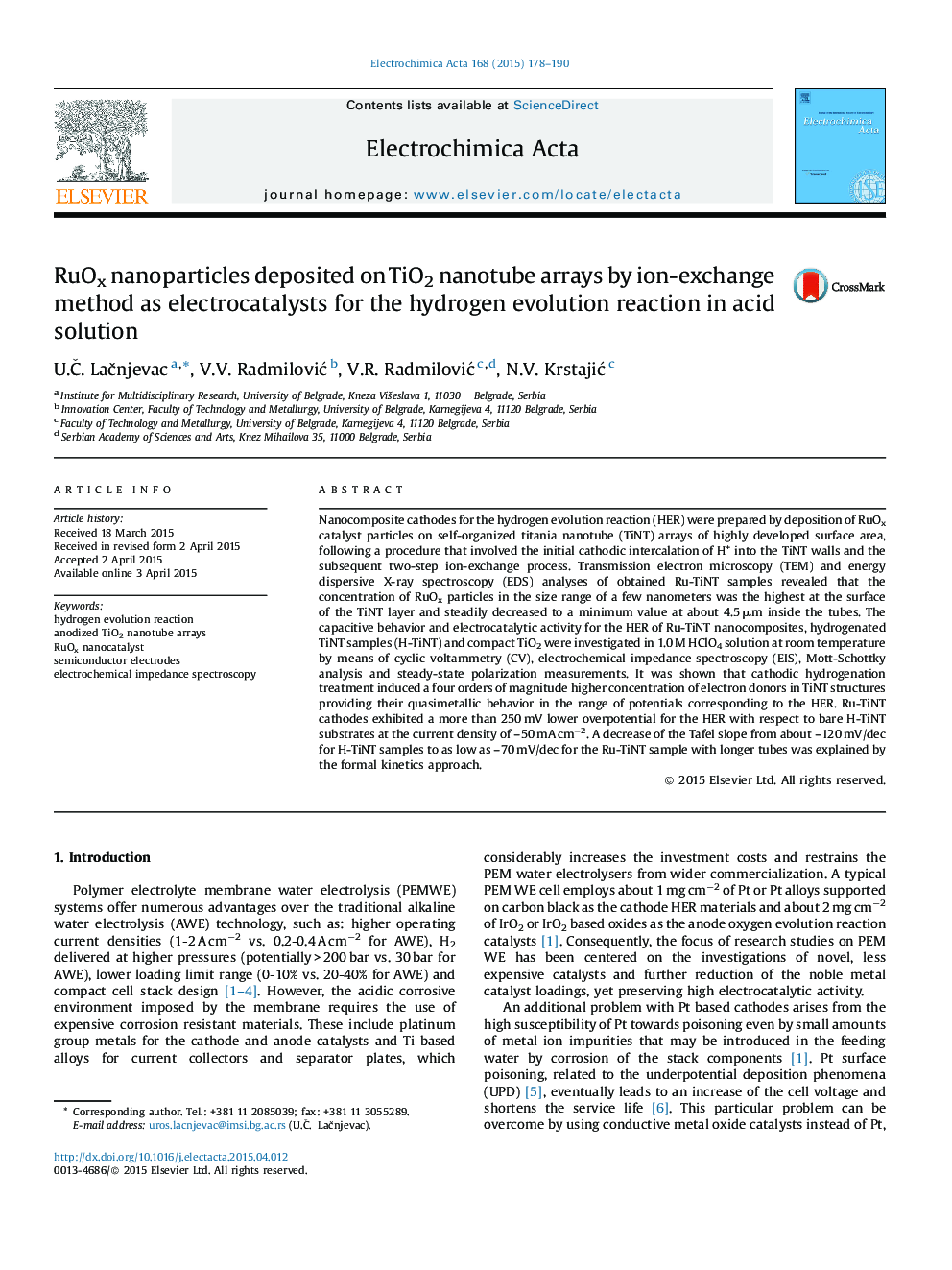| Article ID | Journal | Published Year | Pages | File Type |
|---|---|---|---|---|
| 184233 | Electrochimica Acta | 2015 | 13 Pages |
•Sub-5 nm RuOx particles were deposited on anodic TiNT arrays by ion-exchange.•Cathodic hydrogenation treatment improved the conductivity of TiNT substrates.•Entire inner surface of TiNT cathodes was accessible for HER in 1 M HClO4 at 23 °C.•Ru-TiNT exhibited about a 250 mV lower HER overpotential compared to H-TiNT.•The HER followed different mechanisms on Ru-TiNT and H-TiNT cathodes.
Nanocomposite cathodes for the hydrogen evolution reaction (HER) were prepared by deposition of RuOx catalyst particles on self-organized titania nanotube (TiNT) arrays of highly developed surface area, following a procedure that involved the initial cathodic intercalation of H+ into the TiNT walls and the subsequent two-step ion-exchange process. Transmission electron microscopy (TEM) and energy dispersive X-ray spectroscopy (EDS) analyses of obtained Ru-TiNT samples revealed that the concentration of RuOx particles in the size range of a few nanometers was the highest at the surface of the TiNT layer and steadily decreased to a minimum value at about 4.5 μm inside the tubes. The capacitive behavior and electrocatalytic activity for the HER of Ru-TiNT nanocomposites, hydrogenated TiNT samples (H-TiNT) and compact TiO2 were investigated in 1.0 M HClO4 solution at room temperature by means of cyclic voltammetry (CV), electrochemical impedance spectroscopy (EIS), Mott-Schottky analysis and steady-state polarization measurements. It was shown that cathodic hydrogenation treatment induced a four orders of magnitude higher concentration of electron donors in TiNT structures providing their quasimetallic behavior in the range of potentials corresponding to the HER. Ru-TiNT cathodes exhibited a more than 250 mV lower overpotential for the HER with respect to bare H-TiNT substrates at the current density of –50 mA cm−2. A decrease of the Tafel slope from about –120 mV/dec for H-TiNT samples to as low as –70 mV/dec for the Ru-TiNT sample with longer tubes was explained by the formal kinetics approach.
Graphical abstractFigure optionsDownload full-size imageDownload as PowerPoint slide
